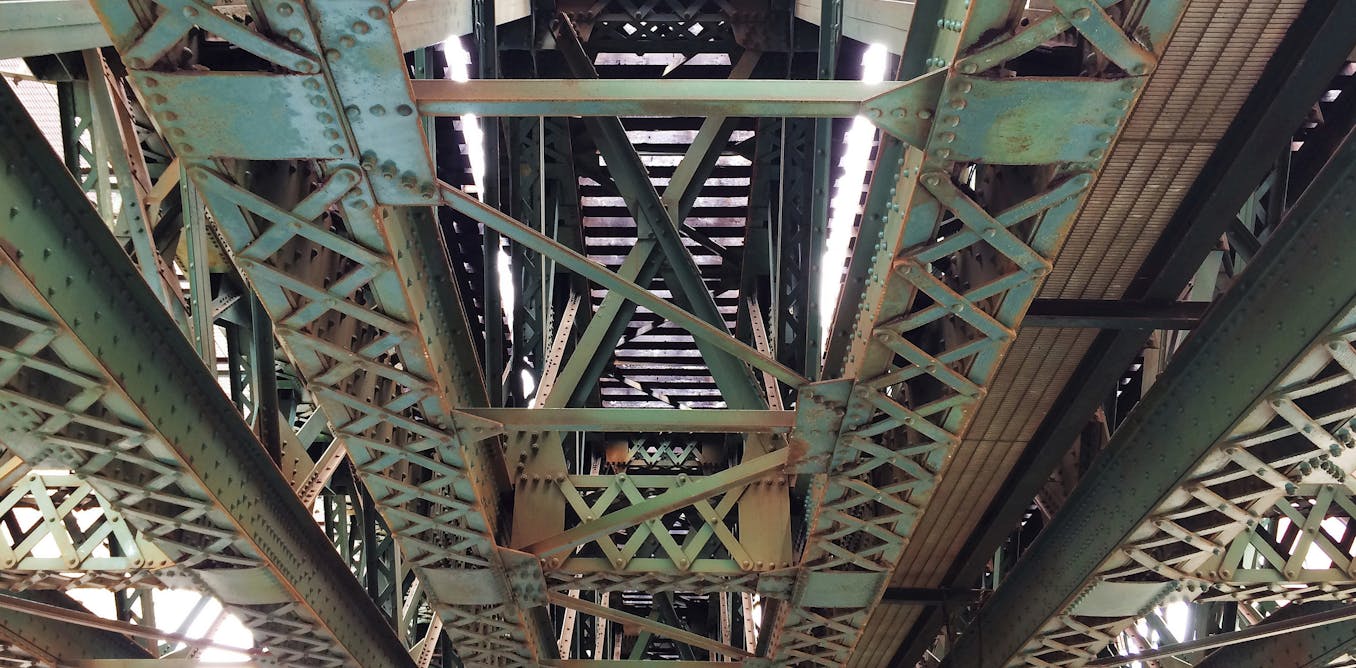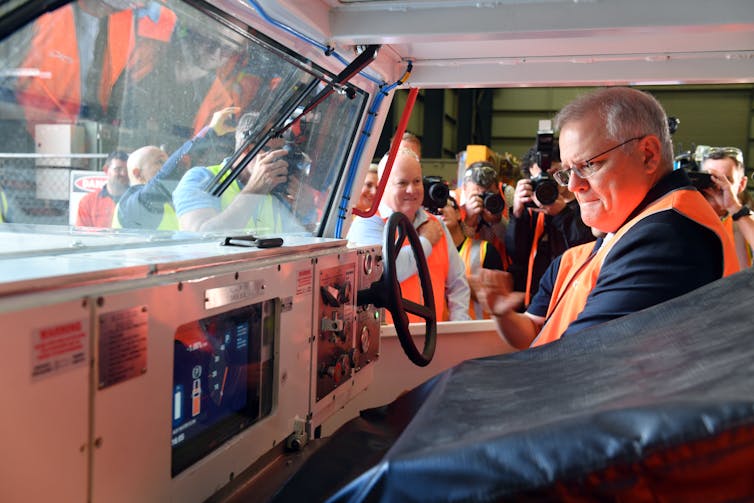After months of discussion and negotiation, Congress has handed a sweeping measure to improve many portions of the country’s infrastructure. The invoice supplies US$1.2 trillion in investment, together with $550 billion in new federal spending; the remainder renews and updates present transportation methods, reminiscent of freeway development.
Whilst the invoice is smaller than President Joe Biden’s authentic $2.6 trillion request, it nonetheless represents the most important federal funding in U.S. infrastructure in over a decade. A observation from the White Area asserts that the law will “pressure the advent of good-paying union jobs and develop the financial system sustainably and equitably.”
Those 5 articles from our archives analyze some infrastructure wishes that can obtain new investment.
Contents
1. Solving crumbling bridges
The infrastructure invoice supplies $110 billion to mend 1000’s of growing older roads and bridges around the U.S. That cash shall be particularly welcome in Alaska, the place weather trade is thawing permafrost – accelerating corrosion of metal bridges – and melting river ice that many of us used to move by means of snowmobile. Fewer than part of the state’s bridges are deemed to be in nice situation.
“When the ice is volatile or unpredictable, individuals who depend on crossing the river are caught and the chance of snowmobile fatalities rises,” a crew of engineers and social scientists from Penn State College and the College of Alaska Fairbanks document. “Federal infrastructure funding may lend a hand direct finances to rural bridges that would possibly differently proceed to become worse.”
Learn extra:
Infrastructure invoice handed by means of Congress guarantees billions for bridge restore – rural Alaska displays the rising want as temperatures upward thrust
2. Construction a Twenty first-century energy grid
Power mavens broadly agree that the U.S. must improve its electrical grid in order that it might ship energy extra reliably over lengthy distances and combine extra renewable electrical energy into the country’s power combine. The infrastructure invoice comprises $65 billion to replace and increase the grid.
Connecting the fragmented U.S. energy gadget into what’s referred to as a macrogrid – a community that may transfer electrical energy seamlessly from one finish of the U.S. to the opposite – may if truth be told get monetary savings, in keeping with Iowa State College electric and pc engineering professor James McCalley. That’s true even if it could imply including masses of megawatts of recent producing capability and new transmission traces to attach the ones energy vegetation to shoppers.
“By way of making it imaginable to percentage energy throughout areas and ship top quality renewable energy from far off spaces to load facilities, the macrogrid would greater than pay for itself,” McCalley writes.
Learn extra:
The USA wishes a macrogrid to transport electrical energy from spaces that make it to spaces that want it
3. Making streets more secure for walkers and bikers
The infrastructure invoice supplies $11 billion for measures designed to make highways and streets more secure. That incorporates investments to give a boost to options that give protection to pedestrians and cyclists, like up to date sidewalks, motorcycle lanes and side road crossings.
John Rennie Quick, an city coverage professional on the College of Maryland Baltimore County, says those measures are past due. “Within the Twenty first century, a brand new town preferrred has emerged of a extra bike-friendly, walking-oriented town. However piecemeal implementation of motorcycle lanes, pedestrianized zones and visitors calming measures continuously simply provides to the confusion,” he writes. “Extra persons are being killed as a result of towns are encouraging citizens to stroll and motorcycle, however their roads are nonetheless ruled by means of fast-moving vehicular visitors.”
Learn extra:
Why US towns are changing into extra unhealthy for cyclists and pedestrians
4. Extra EV charging stations
Mavens broadly agree that slowing weather trade calls for a large international shift from fossil fuels to low- and zero-carbon power resources. That transition is underway within the auto business, the place carmakers are pouring billions of bucks into new electrical car designs.
However the EV revolution faces a important pace bump: no longer sufficient public charging stations. The infrastructure invoice contains $7.5 billion to increase the present U.S. community, which these days exists basically in coastal states.
Stanford College historian Paul N. Edwards calls this investment “a small however authentic down fee on a extra climate-friendly delivery sector and electrical energy grid, all of which is able to take years to construct out.” Whilst the prematurely price might appear prime, Edwards notes that “over the longer term, the prospective financial savings from have shyed away from weather dangers like droughts, floods, wildfires, fatal warmth waves and sea stage upward thrust can be a ways, a ways greater.”
Learn extra:
Local weather trade is an infrastructure drawback – map of electrical car chargers displays one explanation why
5. Reconnecting divided neighborhoods
Maximum finances within the infrastructure invoice are for development new amenities or upgrading those who exist already. However the law additionally supplies $1 billion for tearing down highways that experience bring to an end Black citizens and folks of colour from the towns round them, decreasing their get entry to to transportation, jobs and financial alternative.
[Over 115,000 readers rely on The Conversation’s newsletter to understand the world. Sign up today.]
“As we see it, this investment represents a down fee on restorative justice: remedying planned discriminatory insurance policies that created polluted and transit-poor neighborhoods like West Bellfort in Houston, Westside in San Antonio and West Oakland, California,” write city coverage students Joan Fitzgerald at Northeastern College and Julian Agyeman at Tufts College.
As Fitzgerald and Agyeman see it, putting off barrier highways on my own gained’t be sufficient to change into deprived neighborhoods. However dismantling what they name “racist infrastructure” may catalyze different investments in housing, transportation and inexperienced areas that will make those communities more healthy and extra wealthy.
Learn extra:
Eliminating city highways can give a boost to neighborhoods blighted by means of many years of racist insurance policies
Editor’s notice: This tale is a roundup of articles from The Dialog’s archives.
Supply By way of https://theconversation.com/bridges-bike-lanes-electric-car-chargers-and-more-5-essential-reads-on-the-infrastructure-bill-171338



